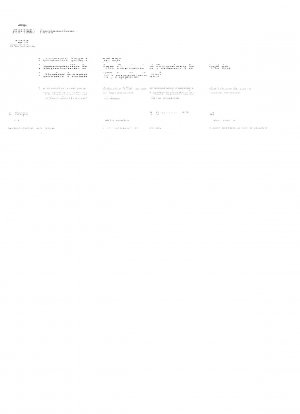ASTM B796-02
Standard Test Method for Nonmetallic Inclusion Content of Powders Intended for Powder Forging (P/F) Applications
- Standard No.
- ASTM B796-02
- Release Date
- 2002
- Published By
- American Society for Testing and Materials (ASTM)
- Status
- Replace By
- ASTM B796-07
- Latest
- ASTM B796-20
- Scope
The extensive porosity present in pressed and sintered ferrous materials masks the effect of inclusions on mechanical properties. In contrast, the properties of material powder forged to near full density are strongly influenced by the composition, size, size distribution, and location of nonmetallic inclusions.
The test for nonmetallic inclusions in powder forged steels is useful as the following:
4.2.1 Characteristic to classify or differentiate one grade of powder from another.
4.2.2 Means of quality comparison of powders intended for powder forging, lot to lot.
Significant variations in nonmetallic inclusion content will occur if:
4.3.1 The powder used to form the test specimen does not meet powder forging quality standards for nonmetallic inclusion content.
4.3.2 Processing of the powder forged test specimen has been carried out under conditions that do not permit oxide reduction or allow oxidation of the test specimen, or both.
1.1 This test method covers a metallographic method for determining the nonmetallic inclusion level of powders intended for powder forging (P/F) applications.
1.2 The test method covers repress powder forged test specimens in which there has been minimal lateral material flow ( < 1%). The core region of the powder forged test specimen shall contain no porosity detectable at 100.
1.3 This test method is not suitable for determining the nonmetallic inclusion level of powder forged test specimens that have been forged such that the core region contains porosity. At the magnification used for this test method residual porosity is hard to distinguish from oxide inclusions. Too much residual porosity makes a meaningful assessment of the inclusion population impossible.
1.4 The test method may be applied to materials that contain manganese sulfide (admixed or prealloyed) provided the near neighbor separation distance is changed from 30 956;m to 15 956;m.
Note 18212;The test method may be applied to powder forged parts where there has been a greater amount of material flow provided:
The near neighbor separation distance is changed, or The inclusion sizes agreed between the parties are adjusted for the amount of material flow.
1.5 This standard does not purport to address all of the safety concerns, if any, associated with its use. It is the responsibility of the user of this standard to establish appropriate safety and health practices and determine the applicability of regulatory limitations prior to use.
ASTM B796-02 Referenced Document
- ASTM E3 Standard Practice for Preparation of Metallographic Specimens
- ASTM E768 Standard Guide for Preparing and Evaluating Specimens for Automatic Inclusion Assessment of Steel
ASTM B796-02 history
- 2020 ASTM B796-20 Standard Test Method for Nonmetallic Inclusion Content of Ferrous Powders Intended for Powder Forging (PF) Applications
- 2014 ASTM B796-14 Standard Test Method for Nonmetallic Inclusion Content of Ferrous Powders Intended for Powder Forging &40;PF&41; Applications
- 2007 ASTM B796-07 Standard Test Method for Nonmetallic Inclusion Content of Powders Intended for Powder Forging (PF) Applications
- 2002 ASTM B796-02 Standard Test Method for Nonmetallic Inclusion Content of Powders Intended for Powder Forging (P/F) Applications
- 2000 ASTM B796-00 Standard Test Method for Nonmetallic Inclusion Content of Powders Intended for Powder Forging (P/F) Applications
